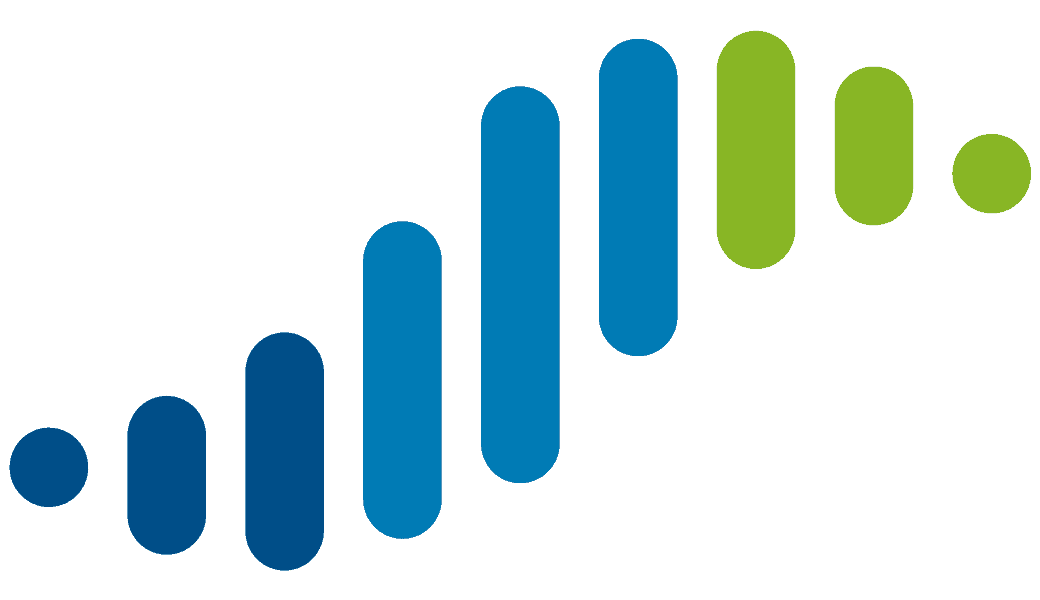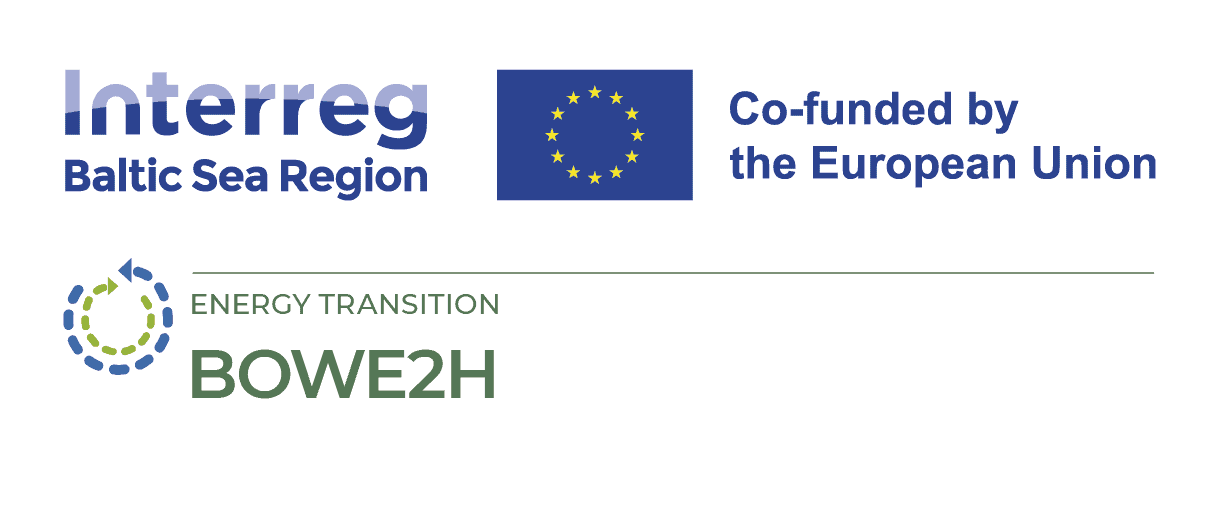
PROGRAMME 2021-2027
Priority 3 Climate-neutral societies
Objective 3.2 Energy transition
Wrap-up of project achievements
The BOWE2H project addressed the challenge of integrating offshore wind and hydrogen systems to overcome renewable energy intermittency and transport limitations—highlighting the need for transnational cooperation across the Baltic Sea Region to build a coordinated, cross-border energy infrastructure.
Project achievements
BOWE2H established a transnational expert network across the Baltic Sea region, hosting six expert events and co-creative workshops in key offshore wind markets. The project developed a Strategic Roadmap for integrating offshore wind and hydrogen, supported by shared knowledge on policy, infrastructure, and investment. Interreg’s involvement attracted key participants and ensured broad relevance and visibility of results.
Project Statistics
Project
Details
Project type
Small project
Project duration
August 2021 – November 2027
Contribution to the EUSBSR
PA Spatial Planning
Budget in million
EURO
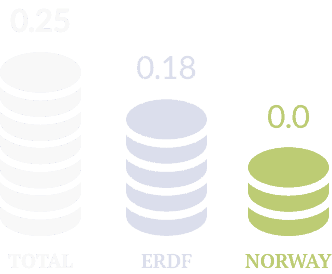
Involved
Countries
Lead partner
Project partners
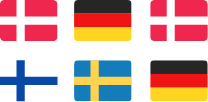
Highlights
BOWE2H
Strategic Regional Roadmap
The BOWE2H Strategic Roadmap is a practical guide for developing offshore wind and green hydrogen in the Baltic Sea region. It combines findings from a meta-study, expert interviews, and co-creative workshops that brought together actors from different countries and sectors. The roadmap looks at the current state of offshore wind and hydrogen, identifies barriers such as fragmented regulation and infrastructure gaps, and sets out recommendations for overcoming them through joint planning and shared investments.
A key feature of the roadmap is its transnational perspective. The Baltic Sea’s offshore wind farms and hydrogen production facilities affect multiple countries, so progress requires cross-border cooperation. Transmission system operators (TSOs) like 50Hertz (Germany) and AST (Latvia) were involved to ensure that grid development and electricity flows are planned beyond national borders.
Roadmap in action
Local public authorities, for example, the Latvian Association of Local and Regional Governments, used the roadmap to align municipal planning with national and regional goals. National authorities such as the Lithuanian Energy Agency drew on its insights to strengthen energy policy frameworks, while the Swedish Energy Agency is expected to apply its recommendations to improve cooperation across borders.The roadmap also brought in other sectors. Research organisations like IKEM (Germany) and the University of Greifswald (Germany) used it to steer their projects towards real-world needs, while large enterprises such as Polenergia (Poland) and Ramboll Poland can use findings to refine investment strategies and consulting services. By making the roadmap available both as a detailed report and an accessible infographic, BOWE2H ensured that diverse stakeholders—governments, grid operators, researchers, and companies—could use it as a long-term planning tool for coordinated offshore wind and hydrogen development across the Baltic Sea.
BOWE2H Forum
The BOWE2H project created a knowledge-building network that connected policymakers, industry representatives, researchers, local and national authorities across the Baltic Sea region. Through initiatives in Warsaw, Vilnius, Malmö, and Berlin, participants discussed how to integrate offshore wind and green hydrogen, exchanged expertise on regulatory and market challenges, and co-developed practical recommendations. More than 250 contacts were established, strengthening cooperation between sectors and across borders.
Added value of the forums
Local authorities, such as the Pomeranian Voivodeship (Poland), used the discussions to coordinate regional energy planning with national strategies. National authorities, including the Latvian Ministry of Economic Affairs and Communications, gained insights into designing supportive policy frameworks. Transmission system operators like 50Hertz (Germany) used the dialogue to refine cross-border grid and infrastructure planning. Research organisations such as IKEM (Germany) integrated findings into their studies on energy systems, while companies including Polenergia (Poland) and Ørsted (Denmark) applied the outcomes to investment strategies and project development. The knowledge generated was shared in multiple forms: event recordings, detailed notes, workshop recommendations, and interactive tools such as quizzes and surveys. These outputs were also integrated into the Strategic Roadmap, ensuring consistency between the events and the project’s flagship result.
Interreg pays off
Spin offs
The network is designed to last beyond the project itself, offering ongoing opportunities for collaboration, policy alignment, and research-practice exchange. By linking diverse stakeholders, it helps ensure that offshore wind and hydrogen development in the Baltic Sea is planned and implemented in a coordinated, transnational way.
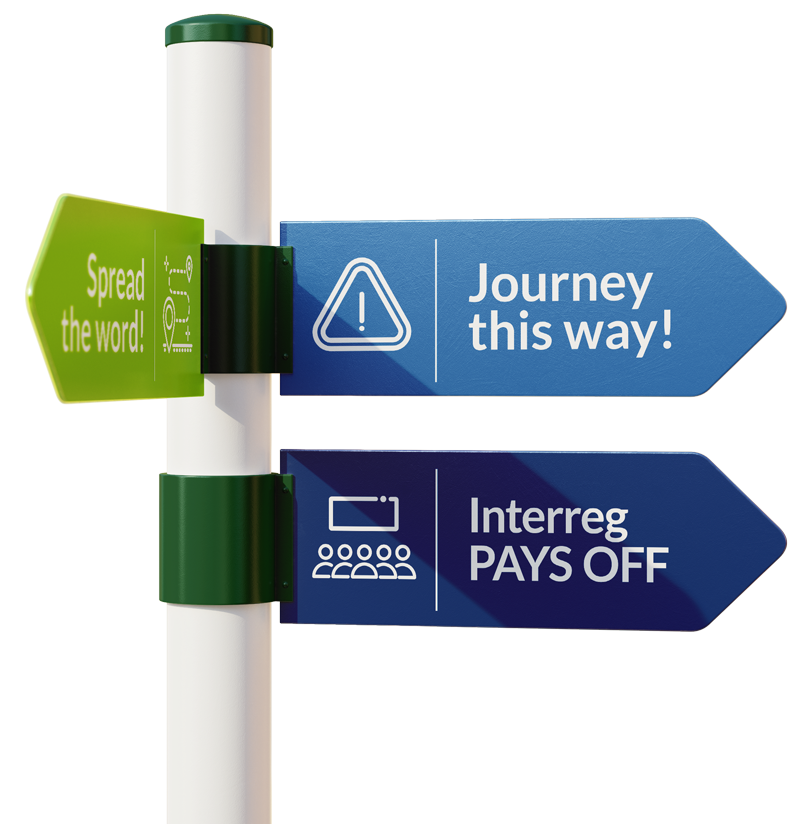
Project Wrap-Up
BOWE2H brought together policymakers, grid operators, researchers, businesses, and local authorities across the Baltic Sea to co-create a Strategic Roadmap for offshore wind and hydrogen. Through lively events, hands-on workshops, and a lasting network, it delivered concrete guidance for cross-border energy planning. Backed by Interreg, the project secured strong participation, wide outreach, and lasting impact for the region’s energy transition.


